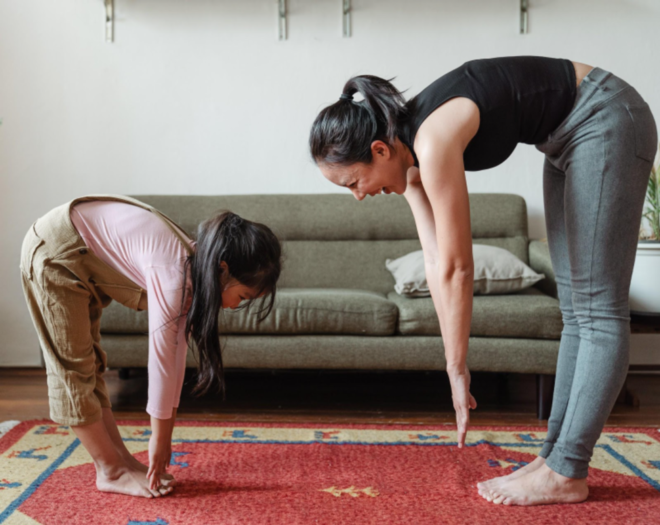![]()
January 2025 - A Fresh Start to the Year!
We hope you had a wonderful Christmas and New Year filled with joy and relaxation! We are excited to welcome you back to the clinic in 2025 returning to our regular hours.
We would like to make you aware that on Wednesday 15th January the team will be enjoying a well deserved spa day for our post Christmas work treat. Although the clinic will be closed on this day, Sophie will be in between 8am and 11am so please call by 9am for appointments on this day.
Looking ahead, Erin will be taking some time off at the end of the month to reunite with her family for the Chinese New Year celebrations. Sophie will be on hand to cover for her while she is away.
We would also like to remind you that Andrea will be retiring at the end of this month. If you wish to see her again before she goes please make an appointment as soon as possible as she is filling up quickly. If you have any questions on the process of transferring to another chiropractor please do not hesistate to contact us. We are all going to miss her!
We’re thrilled to kick off another fantastic year with you and thank you for being a part of our community!

Tips to Improve Spine Health
Spine health is all about mindfulness and constant care. Maintaining a healthy spine, will make everything you do in life a bit easier. Here are some tips on how to keep your spine healthy.
If you can, stretch every single day. Always warm up for 3-5 minutes before you stretch fully. Remember, never stretch cold muscles. Usually after a run or workout you are able to stretch more intensely.
Over time, our muscles and tendons become used to the motions we most regularly perform, tightening up if they are not continually stretched out. The more flexible they remain, the less chance you’ll suffer from a pulled muscle.
Along with staying limber and flexible, you’ll need to make sure your back muscles are strong enough to help you maintain proper form for the entirety of your workouts. Even a few moments of slouching can lead to a pulled back or slipped disc which is not good for spine health.
Try a few weight-lifting and core strengthening exercises at least a few times a week.
Working the body is great but make sure that rest days are taken seriously. Whether you’re practising for marathons or just getting your thirty minutes of activity in, many people forget just how important rest days are.
By not working out on certain days, the body is able to repair damage while simultaneously making your muscles stronger. Too much exercise means this healing doesn’t happen. Make sure you have at least one day a week set aside for rest and repair.
Good spinal health is directly related to a good diet and staying hydrated. Providing your body with necessary nutrients, vegetables, fruits, whole grains, and nuts are required. With these, the body can better heal areas that are injured or are showing signs of injury.
Be sure to practice these tips for a healthy spine.

5 Great Exercises For Those Who Suffer From Back Pain
Chronic back pain has been called a modern epidemic- so how do we help prevent and manage it?
Back pain is the second most common reason to visit the GP, after skin conditions, and almost eight out of 10 of us will suffer from it at least once in our lives. It’s also the number one cause of sick leave – and sufferers are getting younger. It rarely has a serious cause, usually being brought on by bad posture, awkward sleeping positions and other lifestyle habits.
Exercise is one of the best ways to help reduce back pain and keep it from returning. Most minor cases of back pain can be reduced with regular exercise and tailored workouts. Stretching, strengthening, and conditioning exercises can result in stronger muscles that support the spine and your body’s weight. When your body’s skeleton is supported, you are less likely to suffer injury and back pain. 5 great exercises to beat back pain:
Pelvic Tilt
You need to take care of the core muscles that support your spine. There are many workouts for back pain that do this, and your doctor or therapist should be able to give you specific advice and training for your unique back pain condition.
A good example of a safe strengthening exercise is the pelvic tilt. To do this exercise, lie on your back with your knees bent. Tighten your stomach muscles until you can press the small of your back flat against the floor. Hold the press for about five seconds and repeat up to 10 times.
Stretches
Keeping your core muscles limber is as important as keeping them strong. Two good stretching exercises are the knee-to-chest and the hamstring stretch.
To do the knee-to-chest, lie on your back with knees bent and feet flat on the floor. Bring one knee up to your chest and use your hands to pull the knee close while flattening out your back; then repeat with the other knee. The hamstring stretch is done from the same starting position. Pick up one leg with both hands placed behind your knee and then straighten your lower leg. These stretches should be held for about 20 seconds and repeated five times. Be sure to warm up before you stretch.
Stretches to avoid: One of the worst stretches for a person with back pain is bending over to touch your toes while keeping your legs straight. Even worse is bouncing while trying to touch your toes. Other bad workouts for back pain are ones that require you to bend or twist with any type of weight in your hand.
Water Workout
An aerobic exercise is any exercise that uses the big muscles of your body in a rhythmic and repetitive way. Aerobic exercise can get blood flowing to your back muscles, which can really help them recover from injury and increase their strength. Walking is a good low-impact aerobics choice for your back, but swimming may be an even better workout for back pain if you get backaches.
In general, swimming is an excellent form of low-impact aerobic conditioning that is easy on the back and spine, with swimming there is practically no impact on the spinal structures. The water supports the body, relieving stress on all joints in the body.
Yoga and Pilates
Three all-around good workouts for back pain are Yoga, Pilates and working with an exercise ball. Yoga and Pilates are great because, as long as your teacher knows your limitations, they can be adapted safely for most people with back pain.
Yoga and Pilates are both fantastic mind-body workouts that can dramatically improve your overall fitness and wellbeing if a regular practice is put into place. In terms of flexibility, both workouts can improve overall flexibility as well as increasing spinal flexibility. Increasing spinal flexibility will really help to improve your fitness performance, in addition to helping prevent injuries.
Pilates focuses on spinal flexibility through articulation of the spine. It is excellent as a strengthening exercise and supporting your back. Pilates and Yoga stretches benefits include improving your posture, helping support the spinal column and alleviating back pain. However certain postures such as deep back bends and cobras can be a bit risky, especially if you suffer from any back pain.

Sleeping with Lower Back Pain
Millions of people throughout the world deal with negative effects of lower back pain which can come about for a multitude of reasons including exercise, work, chronic illnesses, bad posture, standing for long periods of time and even sleep.
When you go to sleep, you lose conscious control over your body and you can potentially end up tucking your pelvis in or twisting your spine. Any existing back pains can get further aggravated, resulting in a restless night.
Here are some sleeping tips that can help prevent stresses on your spine, keep your back relaxed and create a healing environment.
Buy a good pillow
Be sure to have a pillow that supports both the head and the neck. Finding the right pillow is crucial in keeping your spine in complete alignment throughout the night. Make sure the pillow is sturdy enough that your neck is aligned with the rest of your spine, while sleeping on your back or side. Be sure the space beneath your neck is completely filled to support its curve. Double check that the pillow is firm enough to support this alignment throughout your sleep.
Find a good sleeping position
An important element in dealing with lower back pains while resting is your sleeping position. You want to be mindful of your spine’s resting position and try your best to keep it neutral.
Sleeping in the fetal position with knees drawn towards the chest at 90 degrees, is a good sleeping position. Sleeping on your side also helps keep the neck in line with your spine. Keeping a pillow between your knees also helps to stabilise the hips. If you prefer to sleep on your back, be sure to properly align your body from head to toe and prop your knees up with a small pillow.
You can also take a reclined position by keeping one leg straight and the other one bent at the knee. This slight incline helps to relieve disc problems. A shallow pillow also helps to reduce back pressure.
Don’t stay in one position all night
Don’t be scared of switching your sleeping position throughout the night. It’s natural — and desired — to move some during your sleep. All sleeping position, even if it’s an acceptable one, can put too much pressure on your back if you stay there all night.
Select the right mattress
Overly soft or firm mattresses can potentially cause lower back pain and aches in other parts of the body. A medium-firm mattress is generally accepted as a well-supportive option. It has an even surface and reduces body aches and pains.
Restorative sleep is crucial when trying to reduce your back pain. Learning how to sleep with lower back pain can take some time to get used to. Keep in mind these tips to help you get more restful, repairing sleep each night.
It could help to pay a visit to your local chiropractor to learn more about the best sleeping positions for you.
We treat all conditions that affect any muscle or joint in your body, from your head to your little toe! One of the most common complaints that we treat is back pain and Chiropractic is recommended by the government authority, the National Institute for Clinical Excellence (NICE) for acute and chronic back pain. Some of the other conditions that we treat are neck and headache, shoulder pain, leg and hip pain, knee and foot pain, sciatica and arthritis. Our registered Chiropractors all have at least five years of training. Treatment costs can be covered through most health insurers. If you are in any doubt, we are always very happy to talk with you on the phone to see if your condition will respond well to Chiropractic treatment. Call the clinic now to arrange an appointment time that works for you. 0115 9225085 If you would like to opt-out of receiving these newsletters please follow the unsubscribe link below, email alex@beestonchiropractic.co.uk or let us know at your next appointment.



